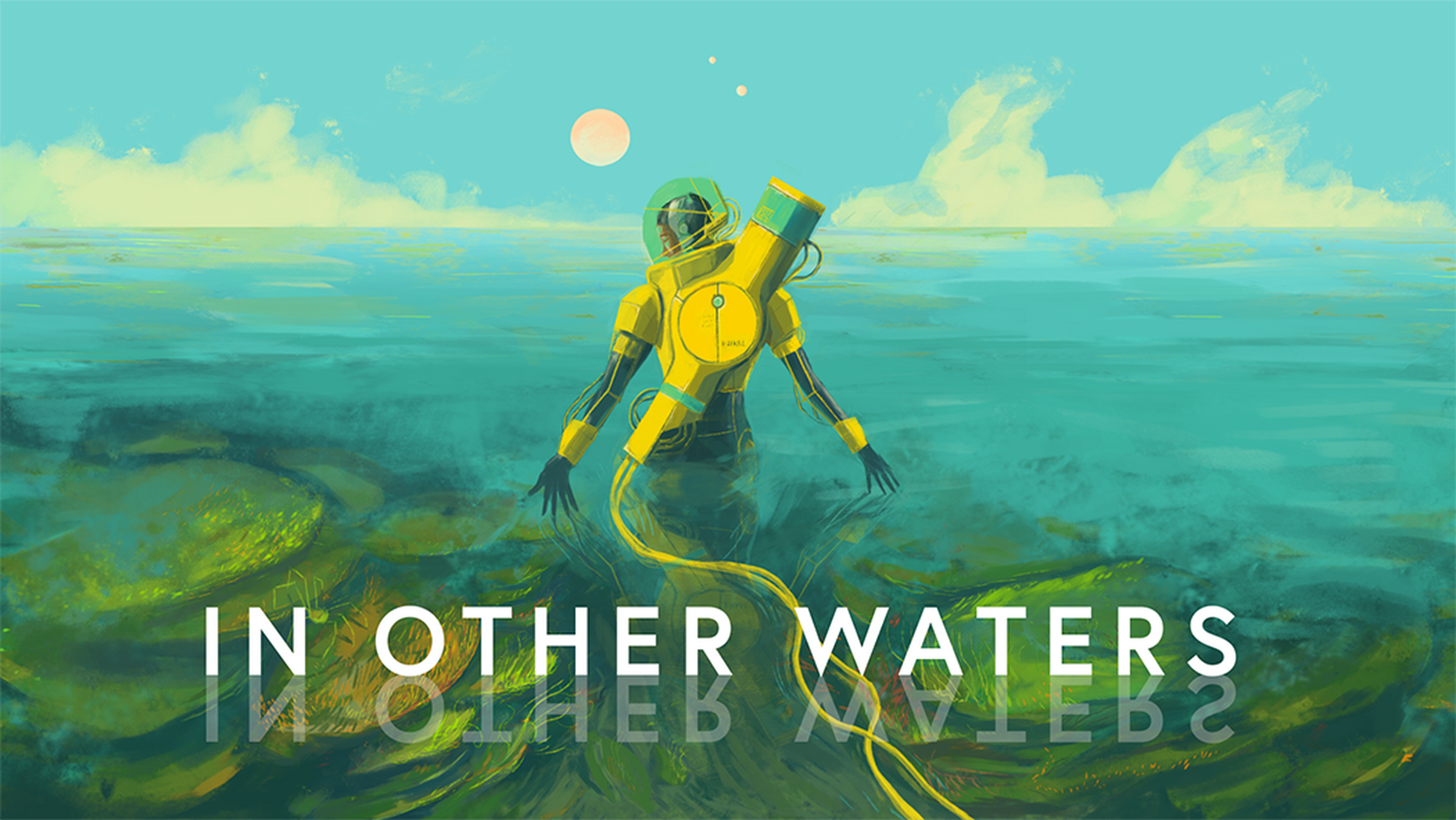023
Gareth Damian Martin
Gaming & Speculative New Worlds
Today’s conversation is with video game designer and creator of Heterotopias. Gareth Damian Martin.

‘In Other Waters’ video game by Gareth Damian Martin
The idea that architects provide a service is often a touchy subject. Architects (and designers in general) like to believe that we do more than offer solutions to predefined problems brought to us my a client. One of the most common means for overcoming this belief for an architect is to serve two masters (often simultaneously). One being the profession of architecture and the other being the discipline. And as with most dualities, the distinctions can come across as blunt and ham-fisted. The profession is seen as being defined by governance, regulations and protocols of actions while the discipline is portrayed though historical lineages and a uncompromising dedication to strengthen architectures relevance as a distinct discipline (not to be overrun by engineering, social sciences etc). But like I said a moment ago, these two separate characterizations of practicing architecture rarely exist without some overlap from the other.
This brings me back to the topic of service. Providing visions of alternate futures is something that architecture has been rather good at in the past. These are well thought out potential futures that play out current trends in technology, politics and sociology in an attempt to skew those trends into a specific and often plausible option…illustrated for the publics consumption. From Cedric Price’s Fun Palace, to Norman Bell Geddes at the 1939 worlds fair for the General Motors Pavilion, or the dozens of projects by Archigram (the list goes on and on). The list can go on and on. What’s important to keep in mind here is that these plausible futures don’t necessarily need to be even realized as build projects in order to be influential and quote unquote ‘serve’ the public. Their value exists in being able to influence expectations. Think of the literature or movies and the role that imagery (on the screen or in your mind) plays in managing your expectations. Permitting you to imagine opportunities you didn’t know were possible or helping you come to terms with a reality you might not have yet personally experienced.
This is particularly important today as we face a plethora of uncertainty (many of which have been discussed here on the podcast before from climatic changes to our planet to biology of our human bodies as well as technologies such as AI, augmented reality that will likely mediate between the two (earth and our bodies). As Stanislaw Lem has said before “There are no answers, only choices.’ And unfortunately, most conversations related to these topics revolve around the belief that our problems have answers. Issue of global warming, energy resources and synthetic biology need to be addressed on multiple fronts. Technological solutions are one of those fronts, but not the only one. Focusing on these problems solely through the lens of the technological gives the impression that we have a problem that can be fixed. And when a problem is believed to be fixable, it is assumed that solution gives us something that looks like it did prior to the problem. “ This is a very important conversation to have because as long as people see our environmental situation as problem that can be fixed, they will always carry in their minds images of a past that they believe we can return to. What would better would be to provide alternative imagery of a future that is both optimistic yet carries with it the potential for change. These images and scenarios (not intending to be predictive, but instead plausible) would work to stretch the imagination and prepare us for what lifestyles could be.
Forms of entertainment influence participants, the movies we watch, the books we read and the games we play. In this episode I talk with Gareth Damian Martin about video games and the role of designed landscapes and spaces within those games. If you’re like me and not someone invested in gaming, no worries. It’s likely you’ve heard about at least a few of these including ‘No Man’s Sky’ with its 18 quintillion (I’m not exaggerating) planets that you can explore with creatures and environments unique to each of them. These games such as ‘No Man’s Sky’ make our expectations pliable. What are the 18 quintillion possibilities for the environments and the creatures that might inhabit these worlds?
The biological and chemical recipe that we’ve come to think we know here on earth is of course not singular at any given moment and only ever a snapshot in time. I have no way of knowing if earth currently has anything close to 18 quintillion ecologically distinct conditions simultaneously occurring here right now, but no doubt some of those we do have will be forced out while others will emerge into existence. Increasing our bandwidth of imagination and acceptance of what a responsible healthy future looks like here on our planet will require something more than technological solutions to fix a problem, it will require a set of elastic expectations nurtured by imagery and social scenarios in regards to what the twenty first century will bring. In this episode we look to the role gaming as a potential player in this objective.
Gareth Damian Martin
Gareth Damian Martin is the creator and editor of Heterotopias, a project focusing on the spaces and architecture of virtual worlds. Heterotopias is both a digital zine and website, hosting studies and visual essays that dissect spaces of play, exploration, violence and ideology.
